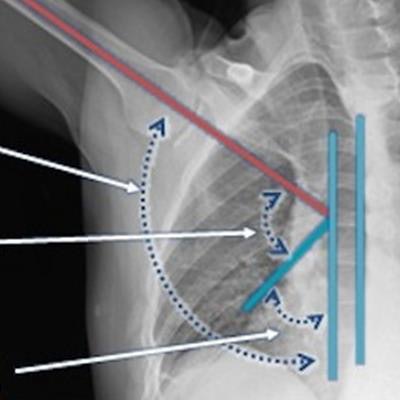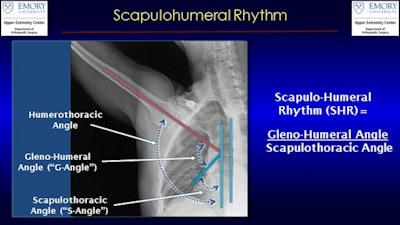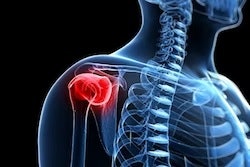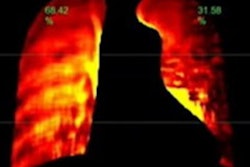
Dynamic digital radiography (DDR) could be a valuable tool for imaging shoulder pathology in patients with rotator cuff tears and other injuries, according to researchers at Emory University in Atlanta.
A team of orthopedic surgeons led by Dr. Angel Xiao utilized DDR to measure the motion of the scapula and humerus during shoulder movement in patients with and without injuries. The technique reliably helped quantify kinematic parameters that could help clinicians diagnose and treat injuries, they suggested in their study published January 31 in the Journal of Shoulder and Elbow Surgery.
"With potential as a screening tool for scapular dyskinesis and as an objective monitoring system of postoperative improvement, DDR shows promise as a safe and simple-to-operate technology that can be realistically implemented into the clinical workflow," the team wrote.
In their study, the researchers investigated whether DDR could be used to screen and monitor what is called the scapulohumeral rhythm (SHR), which is the coordinated motion of the scapula and humerus during shoulder movement. The authors believe that DDR possesses several advantages over traditional static and fluoroscopic imaging; high-quality sequences of radiographic images can provide a greater appreciation of an individual's shoulder anatomy as it relates to their dynamic function with only minimally increased radiation, for instance.
 An x-ray from dynamic digital radiography of the shoulder illustrates the angles used to measure the scapulohumeral rhythm in shoulders of patients with rotator cuff tears. Image courtesy of senior author Dr. Eric Wagner, Department of Orthopaedic Surgery, Emory University, Atlanta, GA.
An x-ray from dynamic digital radiography of the shoulder illustrates the angles used to measure the scapulohumeral rhythm in shoulders of patients with rotator cuff tears. Image courtesy of senior author Dr. Eric Wagner, Department of Orthopaedic Surgery, Emory University, Atlanta, GA.Overall, 121 patients underwent DDR imaging (Konica Minolta Healthcare Americas), including a series of pulsed radiographs during shoulder motion at 6 to 15 MHz for up to 20 seconds. Captured static images are processed by software into dynamic images that display motion; angles were then drawn and calculated using Centricity PACS software (GE HealthCare).
The study population included 13 patients with small rotator cuff tears (SRTC), 29 with massive rotator cuff tears (MRCT), 16 with adhesive capsulitis (AC), or frozen shoulder, and 23 patients with glenohumeral osteoarthritis (GH-OH). The researchers also enrolled a group of 40 asymptomatic volunteers without any known shoulder pathology to act as normal controls.
DDR metrics were acquired in patients during humeral abduction, the upward lateral movement of the humerus out to the side, away from the body, with trained radiology technicians coaching patients on timing and cadence during the shoulder motions.
Higher SHR values generally indicate greater motion of the humerus relative to scapula motion, whereas smaller values indicate abnormally increased, and usually compensatory, scapulothoracic motion. Abnormal SHR is frequently reported across a range of shoulder pathologies, the authors wrote.
SHR measured by DDR during humeral abduction differed significantly in patients with MRCT (1.91), AC (1.55), and GH-OA (2.31) compared with controls (3.39), according to the findings. Also, the analysis revealed control patients had an arc of abduction of 103°, while injured patients had smaller ranges of motion (MRCT, 76°; SRCT, 81°; AC, 65°; GH-OA, 71°).
"When isolating for humeral and scapular motion, all four pathologies had decreased [glenohumeral] abduction, while AC and MRCT had an increased scapular compensatory motion compared with controls," the researchers wrote.
Ultimately, the study describes a new DDR technique for assessing SHR in normal and pathologic shoulders, the authors wrote. Early descriptions of SHR date back to nearly a century, yet its use has remained a relatively understudied metric of shoulder motion. Furthermore, there is currently no reproducible method of measuring SHR that is both cost-effective and efficient for clinical use, they added.
"Quantifying kinematic patterns like SHR using DDR can be implemented as a novel, safe, and cost-effective method to diagnose shoulder pathology and to monitor response to treatment," Xiao and colleagues concluded.




















